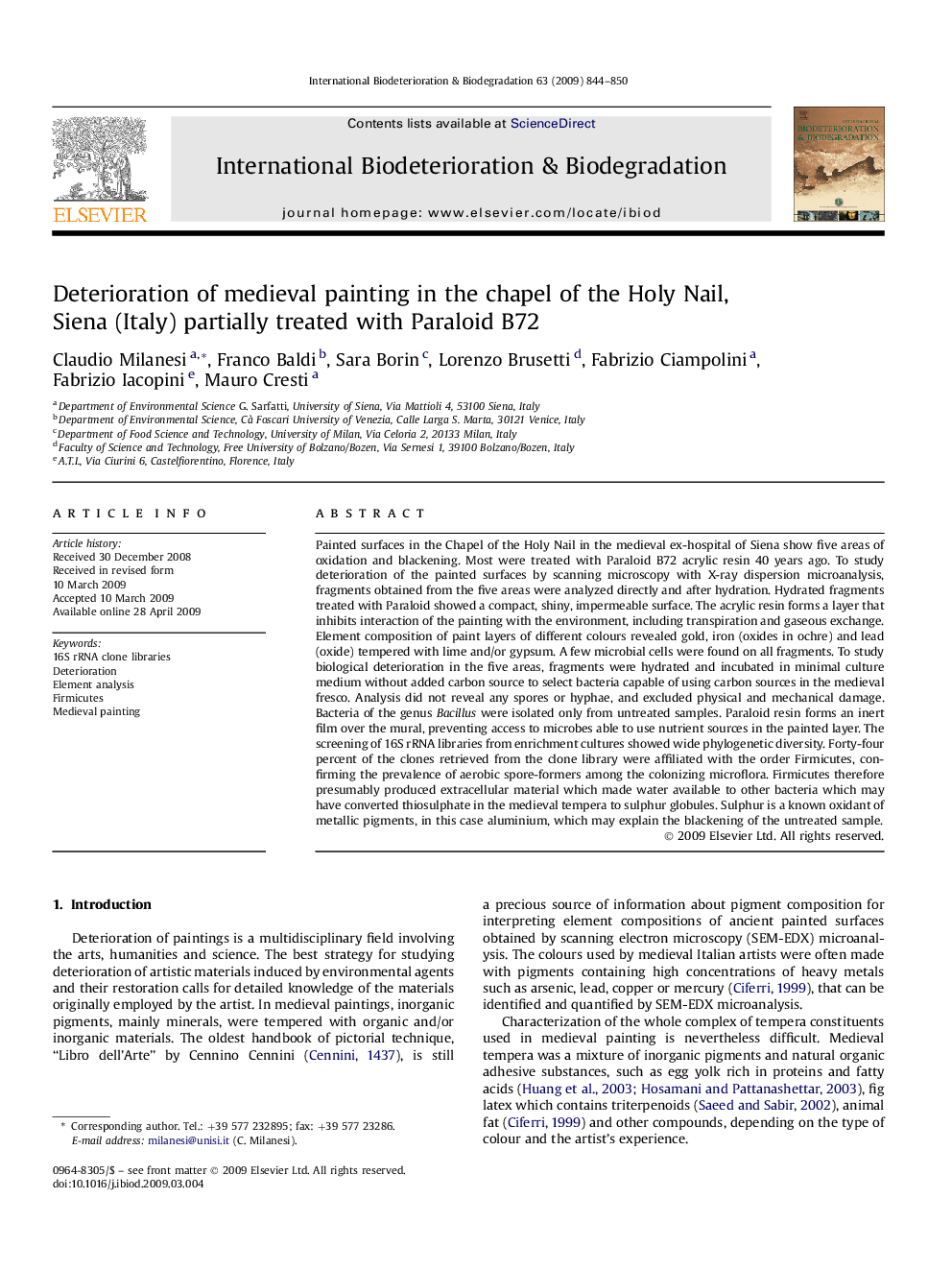| کد مقاله | کد نشریه | سال انتشار | مقاله انگلیسی | نسخه تمام متن |
|---|---|---|---|---|
| 4365625 | 1301769 | 2009 | 7 صفحه PDF | دانلود رایگان |

Painted surfaces in the Chapel of the Holy Nail in the medieval ex-hospital of Siena show five areas of oxidation and blackening. Most were treated with Paraloid B72 acrylic resin 40 years ago. To study deterioration of the painted surfaces by scanning microscopy with X-ray dispersion microanalysis, fragments obtained from the five areas were analyzed directly and after hydration. Hydrated fragments treated with Paraloid showed a compact, shiny, impermeable surface. The acrylic resin forms a layer that inhibits interaction of the painting with the environment, including transpiration and gaseous exchange. Element composition of paint layers of different colours revealed gold, iron (oxides in ochre) and lead (oxide) tempered with lime and/or gypsum. A few microbial cells were found on all fragments. To study biological deterioration in the five areas, fragments were hydrated and incubated in minimal culture medium without added carbon source to select bacteria capable of using carbon sources in the medieval fresco. Analysis did not reveal any spores or hyphae, and excluded physical and mechanical damage. Bacteria of the genus Bacillus were isolated only from untreated samples. Paraloid resin forms an inert film over the mural, preventing access to microbes able to use nutrient sources in the painted layer. The screening of 16S rRNA libraries from enrichment cultures showed wide phylogenetic diversity. Forty-four percent of the clones retrieved from the clone library were affiliated with the order Firmicutes, confirming the prevalence of aerobic spore-formers among the colonizing microflora. Firmicutes therefore presumably produced extracellular material which made water available to other bacteria which may have converted thiosulphate in the medieval tempera to sulphur globules. Sulphur is a known oxidant of metallic pigments, in this case aluminium, which may explain the blackening of the untreated sample.
Journal: International Biodeterioration & Biodegradation - Volume 63, Issue 7, October 2009, Pages 844–850